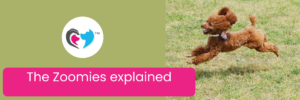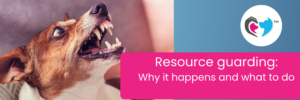As New Year’s Eve approaches, the festive season brings celebrations, fireworks, and excitement—but it can also be a time of extreme stress for our pets. Many dogs and cats react strongly to the loud noises, bright flashes, and sudden explosions of fireworks. Preparing ahead can make a huge difference in helping pets feel calm and safe as we ring in the new year. Here’s a guide to preparing your pets for fireworks, including tips on using thunder jackets, calming medications, and when it might be best to stay home.
Preparing your home for fireworks
Creating a secure, comforting environment is one of the best ways to help your pets during fireworks. If you know fireworks will be going off nearby, try these preparation tips:
- Create a Safe Space: Set up a quiet area in your home, ideally a room away from windows and outside walls. This safe space should include familiar items like blankets, toys, and bedding to provide a sense of security and comfort. Pets can retreat here if they feel anxious.
- Use White Noise: Running a fan, soft music, or white noise machine can help mask the sounds of fireworks and reduce their impact. Studies have shown that classical music or nature sounds can have a calming effect on pets, helping them feel more at ease (Levine et al., 2007).
- Keep Curtains Closed: Closing windows and drawing curtains can help muffle the sound of fireworks and block any flashes that might otherwise startle your pet. For cats, ensure their escape routes and hiding spots are accessible if they want to hide away.
Use of thunder jackets and calming wraps
Thunder jackets, also known as calming wraps, can be very effective in helping pets feel secure during fireworks. These snug-fitting jackets apply gentle pressure, which has been found to help reduce anxiety in many dogs (and some cats) by triggering a calming response, similar to the way swaddling soothes infants. Pressure wraps like the ThunderShirt are popular choices and have been shown to reduce anxiety behaviours in up to 80% of dogs.
When to Use a Thunder Jacket: If your pet is known to have mild to moderate anxiety around fireworks, a thunder jacket can be a great option. It’s best to put the jacket on before fireworks start, as early preparation can prevent anxiety from escalating.
Training and Testing: Introduce the thunder jacket to your pet in advance so they have time to get comfortable wearing it. Using treats or positive reinforcement can help build a positive association with the jacket.
Calming medications and natural remedies
For pets with moderate to severe firework anxiety, calming medications and natural remedies may be necessary. Always consult with your veterinarian before giving any medication, as they can provide advice tailored to your pet’s specific needs.
- Prescription Medications: Some pets may benefit from prescription anti-anxiety medications, especially if they have a history of severe reactions to fireworks. Common options include Sileo, Trazodone, or Gabapentin, which can help reduce anxiety and keep pets safe from panic-induced injuries. These medications work best when administered about an hour before fireworks begin (Crowell-Davis et al., 2003).
- Natural Calming Aids: There are also natural calming aids, like pheromone diffusers (e.g., Adaptil for dogs and Feliway for cats), which release calming scents to help reduce anxiety. Other options include natural supplements like L-theanine or CBD products. Always confirm with your vet before using these to ensure they’re safe and appropriate for your pet.
Staying home with your pet if necessary
If you know that your dog or cat is extremely frightened by fireworks and likely to panic or hurt themselves, the best thing you can do is stay home with them. Having a familiar presence can be highly comforting to pets, who look to their owners for reassurance. Your presence, combined with a calm environment and soothing words, can make a huge difference.
- Engage and Distract: Try engaging your pet with their favourite toys or activities. For dogs, playing with a ball or offering chew toys can provide a positive focus. For cats, try interactive play with a wand toy or hiding treats for them to find.
- Safety First: Pets in severe distress may attempt to escape or hide in potentially unsafe places. Ensure doors and windows are secure, and keep an eye on your pet’s behaviour. Staying home may also allow you to offer comfort and intervene if they start to exhibit extreme stress.
Desensitization and training for future events
For future preparation, consider working on desensitization techniques, especially if your pet struggles with fireworks every year. This method involves exposing your pet to recorded firework sounds at low volumes and gradually increasing the volume over time while providing positive reinforcement. Research supports that this approach, combined with training, can reduce noise-related anxiety in pets (Overall et al., 2012).
Desensitization Training: Start a few months before fireworks season, and reward your pet for calm behaviour when the firework sounds play at a low volume. Gradually increase the volume over several sessions.
Consult a Trainer: If your pet’s fear is severe, working with a professional animal behaviourist can provide additional support in building your pet’s tolerance to loud sounds. You can find a comprehensive list of COAPE qualified behaviourists here: https://coape.org/find-a-behaviourist-directory/
Preparing for New Year’s fireworks can make a significant difference in your pet’s comfort and well-being. By taking proactive steps—setting up a safe environment, using thunder jackets, considering calming medications, and possibly staying home—you can help your pet feel calm and secure during what might otherwise be a stressful night. With preparation, patience, and the right support, you and your pet can greet the new year with comfort and peace.
References:
– Crowell-Davis, S. L., Seibert, L. M., Sung, W., Parthasarathy, V., & Curtis, T. M. (2003). Use of Clomipramine, Alprazolam, and Behaviour Modification for Treatment of Storm Phobia in Dogs. *Journal of the American Veterinary Medical Association, 222*(6), 744-748.
– Levine, E. D., Ramos, D., & Mills, D. S. (2007). A prospective study of two self-help CD based desensitisation and counter-conditioning programmes with the use of Dog Appeasing Pheromone for the treatment of firework fears in dogs. *Applied Animal Behaviour Science, 105*(4), 311-329.
– Overall, K. L., Dunham, A. E., & Frank, D. (2012). Frequency of non-specific clinical signs in dogs with separation anxiety, thunderstorm phobia, and noise phobia, alone or combined. *Journal of the American Veterinary Medical Association, 241*(4), 482-487.





